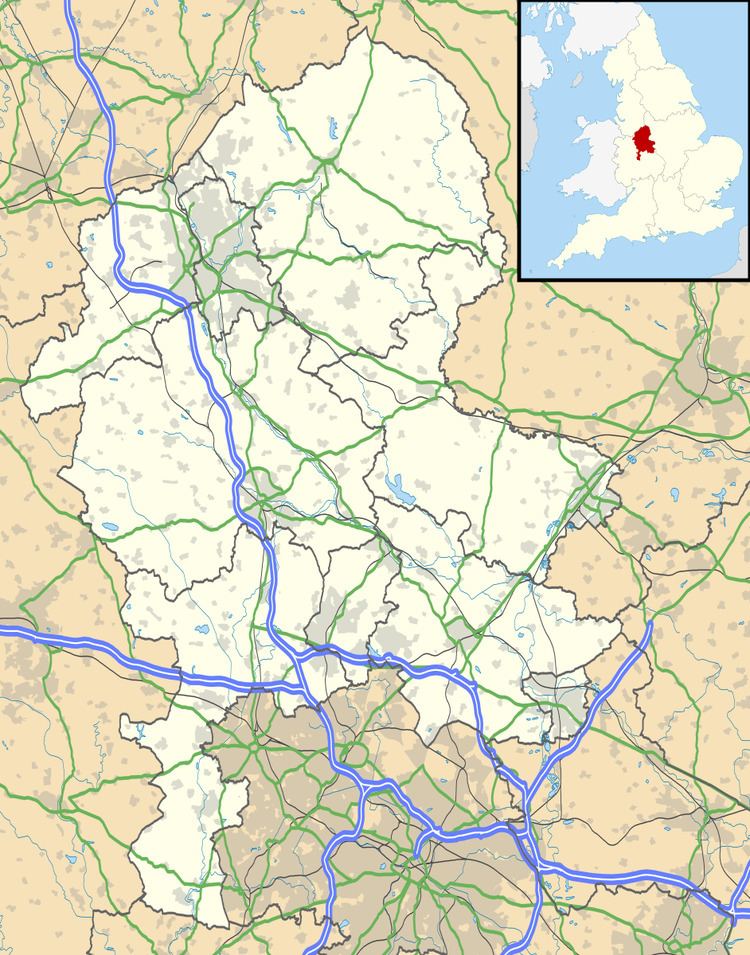Population 8,466 (2011) Sovereign state United Kingdom Local time Tuesday 2:02 PM | OS grid reference SK267234 Post town BURTON-ON-TRENT Dialling code 01283 | |
 | ||
Weather 13°C, Wind NW at 21 km/h, 64% Humidity | ||
Winshill is a village to the east of the town of Burton upon Trent, in the borough of East Staffordshire, England.
Contents
Map of Winshill, UK
Flanked to the north and east by the South Derbyshire border, historically the parish of Winshill had always been part of Derbyshire until it was transferred to Staffordshire in the late 19th century.
Along its southern flank runs the A511, known locally as the Ashby Road, from Bretby Lane and Moat Bank (Burton upon Trent's highest point) to the eastern end of the Trent Bridge and the junction with the A444.
Along its western flank are the River Trent and the B5008 Newton Road, which runs to Newton Solney and Repton in South Derbyshire.
The parish church in Winshill is St Mark's, part of the Diocese of Derby.
History
The name Winshill has its origin in Old English and means Wine's hill. There was a settlement here in the late 11th century when William I installed privileged tenants at Winshill. By this time there was a corn mill on the Winshill bank of the River Trent, and in the 14th century a fulling mill – which became a cotton mill in the late 18th century - was built on an island nearby. By the end of the 18th century the village was grouped around a green on the east side of the hill. The medieval Burton bridge crossed into Winshill at its east end, and the road to Ashby-de-la-Zouch then followed a line along Bearwood Hill Road and High Bank Road. A tollgate was placed near the foot of Bearwood Hill Road when it became a turnpike road in 1753. The Ashby Road was put onto a more direct line in the later 1830s and the tollgate was placed near Moat Bank.
Winshill was popular in the 19th century with prosperous citizens of Burton who built large houses like Bladon House, The Woodlands, Highfield House and Moat Bank on the higher ground overlooking the town. At the same time rows of houses were being built for brewery workers on Bearwood Hill, Ashby Road and Alexandra Road. A school was opened at the north end of the village in 1846, and a Methodist chapel opened in 1845. The church of St Mark's was built in 1868, on a prominent site on the top of the hill overlooking the developing village.
In 1921 the Board of Education purchased "The Woodlands" property to provide a new campus for Burton Girls High School. This became incorporated into the comprehensive Abbot Beyne School in 1975.
Commerce
Pubs in Winshill include:
